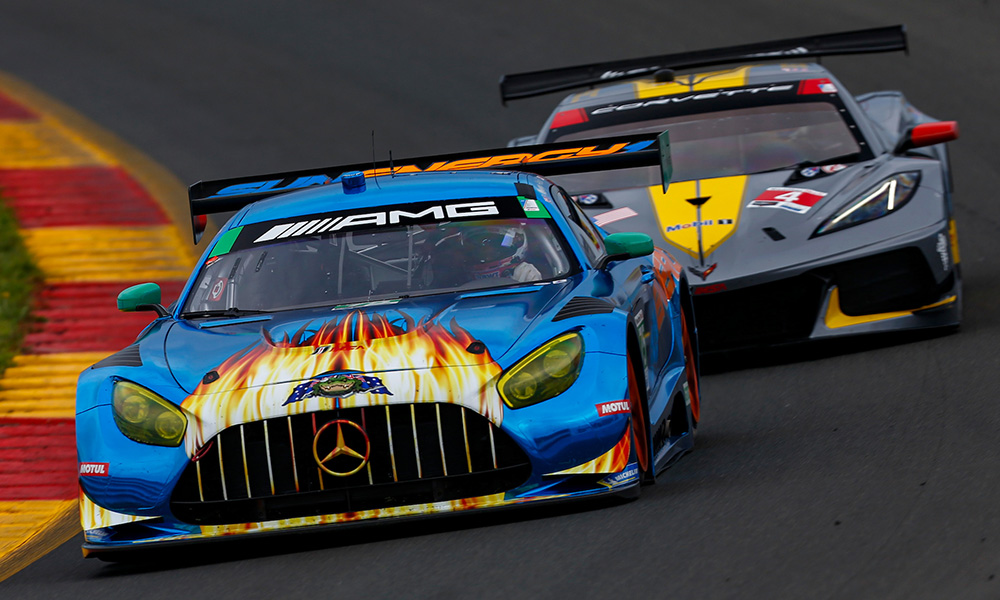
Photo: Jake Galstad/IMSA
GTD Pro and GTD will race largely under the same sporting regulations following a change by IMSA ahead of the pro category’s debut in 2022.
Announced during Friday’s ‘State of the Sport’ address, the sanctioning body has confirmed further alignments between the two GT3-based classes, including the elimination of GTD’s two-stage qualifying format that was rolled out this year.
IMSA has reversed plans to have separate Balance of Performance tables for the two classes, although it will reserve the right to maintain “competitive equivalency” between cars within each class and between classes “if necessary.”
Qualifying for the two classes will now be combined, with qualifying drivers in GTD still required to be Bronze or Silver-rated and GTD Pro having no driver rating restrictions.
An overall grid will be established based on each car’s single-fastest lap time, with class-specific points for qualifying set to continue but the two-stage format seen in GTD this year scrapped.
Additionally, all GTD Pro and GTD cars will be required to start the race on qualifying tires, with the same tire allocation given to both classes each weekend.
As previously confirmed both classes will race on the same Michelin Pilot Sport S9M tire.
GTD Pro drivers will also be subject to the same minimum drive time requirements to those competing in GTD, with refueling times between the two classes now equalized as well.
The Bob Akin Award, which provides an entry to the following year’s 24 Hours of Le Mans, will be reserved for the highest-finishing Bronze-rated driver in the final WeatherTech Championship GTD point standings.
The changes to the sporting regulations mirror those commonly seen in other GT3-based championships with multiple classes that are only distinguished by driver rating requirements.
A number of GTD manufacturers, including Lexus, had been advocating for the same set of regulations between the two classes in order to better facilitate multi-car teams looking to be represented in both categories.
“We were proud of the announcement in January to stabilize the future of GT racing,” IMSA President John Doonan told Sportscar365.
“That decision was made based on feedback from the current manufacturer partners and what is best for their customer racing programs and what’s best for their factory racing programs in some cases.
“Additional feedback and discussion following that announcement led us to what we launched back in the spring.
“Then ultimately to take that back, give some consideration to what is most marketable, what’s the easiest to communicate to our audience, both our current audience and people that we’re trying to bring into the fold and the family.
“That ultimately resulted in what we have announced tonight.
“That’s stability around tires. Everyone’s on the same tire. The cars, as [GT3] homologated, not fiddling with different shocks or any sort of aero. It’s as-homologated.
“Also when it came to BoP, the idea was to also keep it simple. In the end, if there’s a late-race caution and you have pros in the cars, you rack them up and go racing.
“When you break it down and how you explain your sport to our current audience and new people, let’s make it easy.
“The simpler we can make it, the better.”























